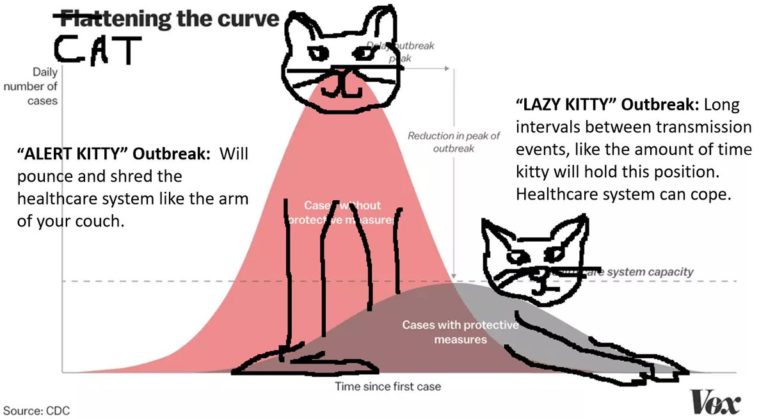The way people are talking these days about Coronavirus is the best example of how necessary it is for scientists to step forward. How many of us would have had the patience two months ago to pursue mathematical modelling? Or to throw the phrase "social distancing" into conversations with friends? To know what a virus is made of and why soap kills it? None of this would be possible without people who know what they're talking about having the patience to explain complex scientific concepts over and over again.
At the same time, sensationalism has also increased, which has consequences at both 'ends' of the conversation. On the one hand, researchers, already reluctant to go public for fear of sensationalizing what they say, tend to become even more reluctant. On the other hand, the public loses trust in "experts" when anyone with an opinion about Vitamin C can be on TV.
The solution that communicators, epidemiologists, academics or other similar sources have chosen was not to stop communicating for fear of spreading panic. On the contrary, it was intensifying efforts to get the message across and trying to make it better.
Useful resources
I've put together some useful resources for science communicators (researchers and journalists alike):
➡ A guide to avoiding sensationalismfrom First Draft News. It includes recommendations such as
- Avoid speculating about the worst case
- Transform complicated information (for example, the idea of "risk level") into something easier to process
- Use visuals as much as possible
- Pay attention to the research papers you mention: because Covid_19 is so new, there are many pre-print papers on this topic, that have not yet been seen and validated by the scientific community. The information there needs to be verified with an expert not involved in the study
➡ I also wrote a mini-guide to avoid pseudoscience, not just for this case, so here is some shameless self-promotion.
➡ An interview about what universities are doing these days https://www.euprio.eu/coronavirus-shows-value-of-science-communication
➡ This article that turned the complicated mathematics of an epidemic into easy-to-understand graphical simulation: https://www.washingtonpost.com/graphics/2020/world/corona-simulato
➡ A similar graphic, but with cats, because the Internet loves cats. The purpose has been expanded, the graphic has been explained and shared by tens of thousands of people

➡ An example of good practice from the University of Bucharest, whose researchers have come out with a statistical modeling of the first 18 days of virus circulation in Romania
Every month, I send a newsletter about Science & Communicationwith articles on how research can be better promoted in Romania. Includes what I write here on the blog, but also recent articles in other languages that I recommend and comment on.
You can subscribe here.




